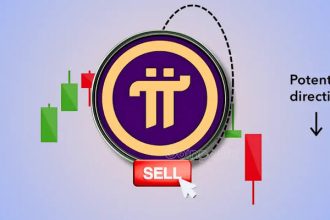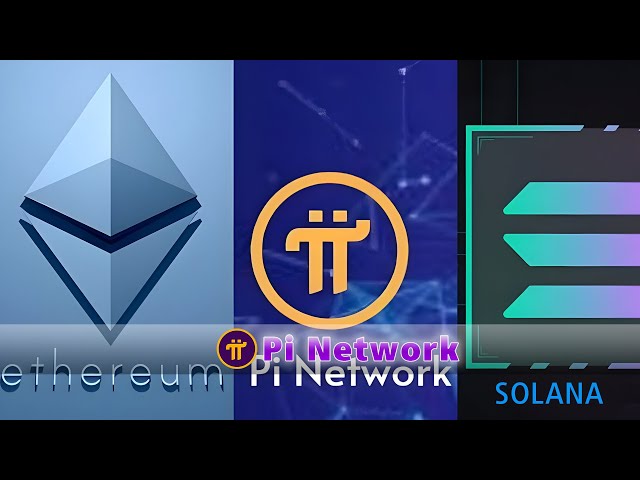The cryptocurrency market, marked by intense competition among blockchain platforms, is witnessing the rise of a relative newcomer, Pi Network. Positioned as a contender against established players like Ethereum and Solana, Pi Network has captured attention with its impending mainnet launch and a unique approach to consensus and scalability. In this article, we delve into how Pi Network could potentially surpass Ethereum and Solana within just three months of its mainnet release.
1. Scalability
Ethereum and Solana, giants in the blockchain space, grapple with scalability issues, leading to congestion and high fees. Pi Network takes a different approach with its innovative “Proof of Consensus” mechanism, aiming for a balance between decentralization and efficiency. This design choice positions Pi Network to handle larger transaction volumes effectively, potentially outperforming Ethereum and Solana in scalability.
2. Accessibility and User Adoption
User adoption is a linchpin for blockchain success. While Ethereum and Solana have gained traction, their adoption is largely confined to crypto enthusiasts and developers. Pi Network targets a broader user base with its mobile mining focus and user-friendly interface. Allowing users to mine Pi on smartphones without excessive energy consumption or data usage, Pi Network stands to onboard millions worldwide. This widespread adoption could be a crucial advantage over Ethereum and Solana in terms of user numbers and overall network effect.
3. Energy Efficiency
Environmental considerations are increasingly vital in the blockchain industry. Ethereum and Solana rely on energy-intensive consensus mechanisms, whereas Pi Network employs the more sustainable Proof of Consensus. This eco-friendly approach positions Pi Network as a greener alternative, appealing to users conscious of their carbon footprint. The emphasis on energy efficiency could attract users and projects seeking environmentally friendly alternatives to Ethereum and Solana.
4. Governance and Decentralization
Governance is a key factor in the sustainability of blockchain platforms. Ethereum and Solana grapple with challenges related to centralization and power concentration in their governance models. Pi Network introduces a unique consensus mechanism that empowers users for active participation in decision-making. By facilitating community-driven governance, Pi Network aims for a more inclusive and transparent ecosystem, potentially appealing to developers and users valuing decentralization.
As Pi Network prepares for its mainnet launch, it positions itself as a disruptor capable of outperforming Ethereum and Solana within a mere three months. Addressing scalability issues, focusing on accessibility, prioritizing energy efficiency, and promoting decentralized governance, Pi Network tackles key pain points faced by its established counterparts. While the future will reveal the extent of Pi Network’s impact, its unique approach and emphasis on user adoption position it as a formidable contender in the blockchain space. This development adds an exciting dimension to the evolving landscape of decentralized finance and the broader cryptocurrency industry. Read Similar Story













Hi ☃️ Snowman! Join my team on ice and receive 10 ice coins when you sign-up using my referral code: kanest
https://play.google.com/store/apps/details?id=io.ice.app
#Ice #Network #IceNetwork #Pi #PiNetwork #Mine #Miner #Mining #Coins #Referral #Free #kyc #everyone
Hi ☃️ Snowman! Join my team on ice and receive 10 ice coins when you sign-up using my referral code: kanest
https://ice.io/@kanest
#Ice #Network #IceNetwork #Pi #PiNetwork #Mine #Miner #Mining #Coins #Referral #Free #kyc #everyone
I am sending you 1π! Pi is a new digital currency developed by Stanford PhDs, with over 47 million members worldwide. To claim your Pi, follow this link https://minepi.com/kanest and use my username (kanest) as your invitation code.
#Ice #Network #IceNetwork #Pi #PiNetwork #Mine #Miner #Mining #World #Coins #Referral #Free #kyc #everyone #SidraBank #Sidra #Crypto #signup #sign #Money #Bitcoin #Btc #Usdt #Bnb #ethereum #Meta #P2P #Binance #Okx #Web3 #Cryptocurrencies #coinmarketcap
Mine Pi for free on your phone! I am sending you 1π! Pi is a new digital currency developed by Stanford PhDs, with over 47 million members worldwide. To claim your Pi, follow this link https://minepi.com/yajer72 and use my username (yajer72) as your invitation code.
I am sending you 1π! Pi is a new digital currency developed by Stanford PhDs, with over 47 million members worldwide. To claim your Pi, follow this link https://minepi.com/daiv101 and use my username (daiv101) as your invitation code.
I am sending you 1π! Pi is a new digital currency developed by Stanford PhDs, with over 47 million members worldwide. To claim your Pi, follow this link https://minepi.com/GauravTheKing and use my username (GauravTheKing) as your invitation code.
Mine Pi for free on your phone! I am sending you 1π! Pi is a new digital currency developed by Stanford PhDs, with over 47 million members worldwide. To claim your Pi, follow this link https://minepi.com/dreamtreats and use my username (dreamtreats) as your invitation code.
I am sending you 1π! Pi is a new digital currency developed by Stanford PhDs, with over 47 million members worldwide. To claim your Pi, follow this link https://minepi.com/klasisi661501 and use my username (klasisi661501) as your invitation code.
https://mobile.over.network/en/invite/84O2QJ3ONS